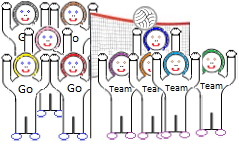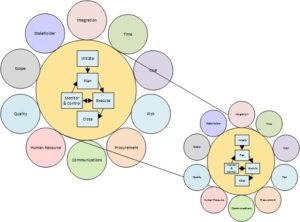In previous articles I have ended with the statement to remember to have fun. We have all been on projects that have required excessive hours and were extremely stressful as we moved through delivery. While it is important to keep the team focused on delivery it is equally important to find ways to step away and as a team take time to have fun.
 My thoughts on this have evolved as I have gained more leadership experience. Early in my career I had a valuable mentor that consistently reminded me of the need for the team to engage in team building activities, and this advice has continued to be invaluable as I have built engaged teams.
My thoughts on this have evolved as I have gained more leadership experience. Early in my career I had a valuable mentor that consistently reminded me of the need for the team to engage in team building activities, and this advice has continued to be invaluable as I have built engaged teams.
In this article I will provide some examples of different team building and team fun activities that have been successful in my experience. You need to understand the culture of your organization and the different personalities on the team to determine which activities will work to achieve positive results.
Recognition and Team Morale Lifters
Some of your projects will have unique names that you are able to leverage. I was responsible for delivery of a solution to develop an internally built application that supported a wide range of internal lines of business. We used the opportunity to name the application by holding a competition where we encouraged all the project stakeholders to submit entries to name the application. The winner was going to receive a small prize along with the recognition of being the person who named the application. The entries we received ranged from very creative to quite humorous. We engaged our internal brand team to be the judge for the winning entry. Once the winning entry was determined I had the name and logo added to t-shirts and gave these to the core project team. This provided an opportunity for all the project stakeholders to engage in a fun activity and the t-shirts allowed the core team to wear our new gear on stage gate events to promote the project.
On this same project we used a fun competition during the user acceptance testing (UAT) phase in order to find system defects or “bugs”. One of the team members created a fun animation that announced the game. Each week throughout UAT the person who identified the most bugs received a gift card. This resulted in a very high number of defects being identified prior to production which as we all know is the best result for overall acceptance.
Another project had a unique name that included the word “Star” as part of the project name. I ordered very inexpensive star shaped tchotchkes that I stapled pieces of paper that contained words and phrases of encouragement. At one of the stage gate lessons learned activities I handed out these tchotchkes with some fanfare. I still have a star tchotchke on my desk ten years later!
Internal or External Activities
One of our PMO team members was a recognized professional artist. She invited a group of us to her home one weekend and encouraged us to bring acrylic paint materials. She gave us loose instructions on what materials might be helpful to create certain types of results. During the day the biggest takeaway I had was how much we all encouraged each other. We built a camaraderie that we took back to the office that was lasting.
Other types of team events include going to shops to paint pottery, create mosaics, and going to a cooking school to cook meals together. We also would take an afternoon and go to lunch and a movie or miniature golf. These were inexpensive activities and were a lot of fun. There were the occasional nights of dinner, bowling, or arcade game venues that included appetizers and refreshments. Some of these activities brought out healthy competition amongst the team which was an added benefit.
On a more current project I was in a city that held Paint Night events which is where you sign up and they supply the painting materials and instructions on how to approach painting the picture. This provided many fun conversations post the event on how different we all interpreted our instructions!
Team Building Activities
I use team meetings as an opportunity to engage in team building activities. Recently I needed to build out a large project team to support a business transformation program. Since I was new to the team, and each week we had new team members join, I used our team meeting as the way to get to know each other. I started out by doing activities like “tell us three things about you” to actual full on team building games. Each week I would ask for a volunteer to come up with the next week’s game. We would spend the first part of the hour working through team updates. We would spend the second half of the meeting engaged in the game. A few examples of the type of games the team came up with included Pictionary like games, guess the bird sound, build a spaghetti tower, and musical chairs spin-offs to name a few. One of the games resulted in the team meeting at a nearby park to play volleyball and those that did not want to play were very noisy spectators! I heard on numerous occasions from different team members that all week they looked forward to the Friday team meetings.
In summary, it is vital to your team health to remember to step away, have fun, and build lasting relationships. There are many different ways to achieve this but the key is to consciously take the time!




